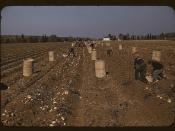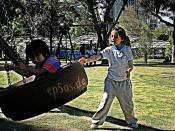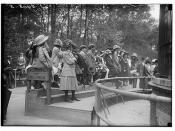RE: Letter to the editor
In reply to your letter, I would like to inform you, that the policy regarding the removal of Aboriginal children was not as you stated. As soon as a child was born, they were considered a ward of the state because of their Aboriginality.
The policy of Assimilation was established in 1911 for the removal of children from their community to extinguish their culture. This is also known as Genocide, but was not seen that way until the policy was removed in the mid 1960s.
Bessy Flower was born in 1943, and taken from her home at 19 months. She was a product of the Assimilation policy. Bessy was removed just the same as most of the other children, pulled obscenely from her mothers arms. She was placed to live in the Annesfield native institution for the next 14 years of her life.
Just the same as most of the other Aboriginal children in the homes, she was no longer allowed to make any contact with her family and was subjected to ongoing physical, mental and sexual abuse, malnutrition and humiliation.
In some of the institutions the standards of living were degrading just so that the children could have an education and become 'absorbed' into the white community, some say it was as if they had been tried to be turned a 'different shade of white'.
The half-caste children were taken under a legislation, which gave guardianship to the protectors in their state of origin. The people that looked after the children once they were removed, once called 'protectors', took up the role of paternalism. This gave the parents no right to appeal to the court of law, and the children had no choice in what they did or where they went.
After 1940 the children were removed under the general child welfare legislation, but still the way the children were extracted was much the same as before.
Only very gradually did the ritual of separating half-caste children from their homes meet with the general non-Aboriginal practices concerning child abuse and neglect. This came as late as the 1970s, when already tens of thousands of children had been removed.
The reason the children were removed was always thought to be for their own benefit, to protect them from themselves, as well as to 'breed-out' the Aboriginal race as it was thought that they were less-superior to white people.
Some people remember; ""We were told that our mother was an alcoholic and that she was a prostitute and she didn't care about us. They used to warn us that when we got older we'd have to watch it because we'd turn into sluts and alcoholics, so we had to be very careful. If you were white you didn't have that dirtiness in you ... It was in our breed, in us to be like that.""
Although now, there is thought to be not one Aboriginal family that has not been scared by the removal of a child, sibling, niece or nephew. Somewhere between one in three and one in ten children were removed. One in ten is a big number of people to be subjected to the abuse endured, but one in three is preposterous. Some of these children were taken at birth, some at two years of age, some in their childhood years.
When the children were removed, they were given a chance at an education that they would never have gotten otherwise. Not all of the children had a horrible up-bringing; some were placed into homes and treated with respect from their foster families. ""We were all happy together, us kids. We had two very wonderful old ladies that looked after us. It [Colebrook, South Australia] wasn't like an institution really. It was just a big happy family. Y'know they gave us good teaching, they encouraged us to be no different to anybody else.""
These children have called themselves the 'Stolen Generation'. Although all the State governments in Australia have apologized for the injustice that went on, the Federal Governments still refuse the Aborigines right to an apology or compensation.
Bibliography:
http://72.14.203.104/search?q=cache:NldOa-78ca0J:www.ondix.com/pdf/docs/studies_research_college_1071167943.pdf+bessy+flower+1943+assimilation&hl=en&gl=au&ct=clnk&cd=2 Told a story that helped with the insight to the cruelty of what really went on in some people's lives as an affect of assimilation.
http://www.tim-richardson.net/misc/stolen_generation.html Explains clearly the Assimilation policy, and the legislations surrounding it.
http://www.hreoc.gov.au/bth/additional_resources/bth_guide/children_experiences.htm Gave some quotes form people that were removed who grew up with good lives, and bad.
Documentary watched with Mrs. Hooks class can't remember what it was called, but it had people explaining just how much they suffered, even when they had a good life to find out what really happened and where their family might have been for the past 70 years. More informative than internet sites because they were proper interviews.


